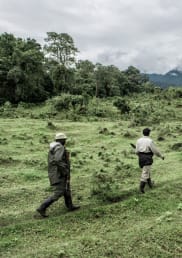War makes states: Conflict Alert 2019
This report highlights the decline of violent conflict incidents in Muslim Mindanao after the Marawi war and amid continuing extremist violence events.
Peace, it is said, does not happen overnight. Yet what happened in the Bangsamoro from 2017 to 2018 is probably the closest we can get to an overnight leap from war and uncertainty to peace and security in the region.
From all accounts, the incidence and the human costs of conflict plunged in 2018 in all provinces and in almost all conflict causes.
The Conflict Alert 2019 report shows how violent conflict began to go down in 2017 despite the war in Marawi, but nowhere as dramatic as the nosedive in 2018. Political violence, identity-based conflict and crime-related violence declined in almost all provinces.
More good news is that conflict deaths have almost returned to their levels in 2015. The decline in conflict deaths was directly related to the decline in conflict incidents in general, which was partly due to the drop in coordinated attacks and the lesser use of explosives in 2018.
The remarkable shift in the conflict situation certainly brings a more conducive environment for development to take place and for a lasting peace to be embedded in what has often been described as the most dangerous place in the Philippines.
More importantly, the situation buys time for the newly established Bangsamoro Autonomous Region in Muslim Mindanao (BARMM) to strengthen its legitimacy and institutionalise the sort of reforms that can be felt immediately by the local population.
To be sure, the peace and security situation remains fragile, and there are bad outcomes that accompanied the good. New types of violent conflict and new conflict actors are emerging. Extremist violence remains resilient and transition-induced violence is growing apace.
Multi-causal violence that combines political and identity-based violence continues to rear its head despite the end of the war in Marawi and is now the leading cause of conflict deaths. In fact, violent extremism has eclipsed other causes of conflict deaths since 2016. Sulu is one such case where the incidence and deaths attributed to extremist violence has continued to rise from 2016 to 2018.
The second cause for concern is that the incidence of violent conflict and the average number of conflict deaths from 2016 to 2018 were much higher than in the years prior to the spike in 2016. In short, the bar has been raised by the higher average number of violent incidents, higher than the recorded levels during the government’s total war against the Moro Islamic Liberation Front in 2000.
In summary, the Bangsamoro is not out of the woods yet. Nevertheless, the 2018 drop in conflict incidents demonstrates a retreat from the most violent years (2016 and 2017) in the Bangsamoro, as lesser violence resulted from fewer gun battles and explosions, and as extremists engaged in sporadic clashes against government troops.
Watch video
About Conflict Alert
Conflict Alert is a sub-national conflict monitoring system that tracks the incidence, causes and human costs of violent conflict in the Philippines. It aims to shape policy-making, development strategies and peacebuilding approaches by providing relevant, robust and reliable conflict data. Find out more at: www.conflictalert.info



